
STEM Homeschool Curriculum: How to Teach Your Kids STEM at Home
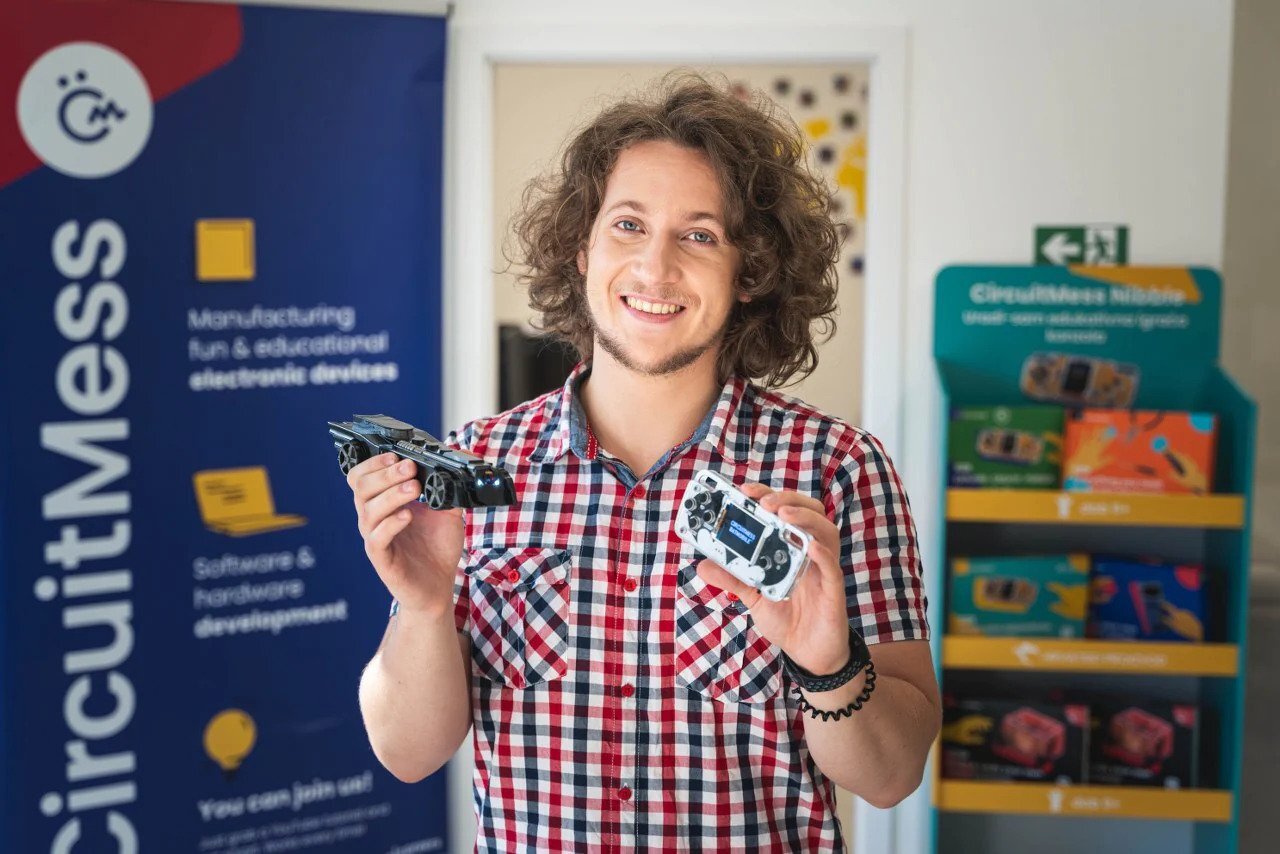
Table of content
Getting into homeschooling, especially with a focus on STEM careers, might seem like navigating through a maze without a map.
But guess what? It's more about igniting curiosity, unraveling mysteries, and revealing the wonders of how the world works.
Through years of exploring and teaching with STEM toys, we've found the best ways to teach STEM at home. It's all about hands-on learning that sparks kids' love for discovery and innovation.
This blog is your friendly guide to weaving a STEM curriculum into your home learning setup that's not just educational — but incredibly enjoyable. We're here to help you pick the best projects, bring engaging lessons to life with CircuitMess STEM kits, and offer tips to keep your kids' eyes sparkling with curiosity.
Just imagine turning your kitchen table into a physical science lab where learning meets fun.
Ready to make education an adventure your kids will love? Let's get started!
What is STEM and how important is STEM education
Ever wondered what STEM really stands for?
Imagine combining the magic of Science, the innovations of Technology, the wonders of Engineering, and the logic of Mathematics into one giant, exciting playground. That’s STEM for you!
It’s not just a bunch of subjects taught in middle and high school either; it’s a way to see the world, solve puzzles, and create things that didn’t exist before.
Why is STEM so crucial, you ask? Well, think about it. We live in a world where technology is in our pockets, science fiction becomes science fact overnight, and problems are complex and global.
STEM is like the training ground for the superheroes who will tackle these challenges head-on.
It teaches kids not just to know stuff, but to think critically, be creative, and work through problems until they find solutions.
STEM is about making sure everyone gets to play. It’s about showing girls and boys from every background that they have a place in STEM. Diversity breeds innovation, and by welcoming different perspectives, we’re setting the stage for breakthroughs we can’t even imagine yet.
So, in a nutshell, STEM education is about equipping our children with superpowers. It’s about preparing them for jobs that haven’t been invented yet and teaching them that they can change the world. Pretty awesome, right?
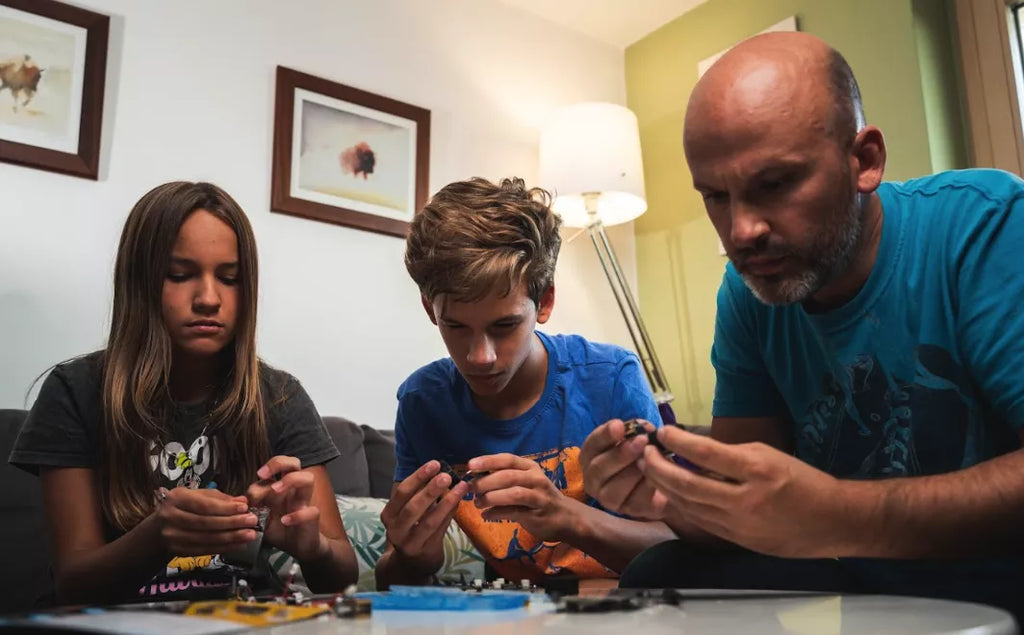
The rising trend of homeschooling in STEM
Lately, there's been a noticeable shift towards homeschooling, especially when it comes to STEM education.
It's like parents everywhere are having a lightbulb moment, realizing that the traditional classroom might not be the only place where their kids can explore the wonders of science, technology, engineering, and math. And why not?
Homeschooling in STEM offers a personalized learning experience that can adapt to a child's unique pace, interests, and learning style.
This trend is catching on for a bunch of reasons. For starters, parents are eager to dive deeper into subjects that often get a skim-over in conventional settings due to time constraints or curriculum limitations.
Then there's the appeal of practical learning — turning the kitchen into a chemistry lab or the backyard into an archaeological dig site. Who wouldn't love that? It's about making learning tangible, engaging, and, most importantly, fun.
Starting STEM education early is crucial because it taps into children's natural curiosity and their developmental stage of rapid learning. According to TeachYourKidsCode's recent article, 92% of boys and 97% of girls will lose interest in STEM learning if they are not immersed before 5th grade.
With resources like online courses, educational apps, and interactive STEM kits from companies like CircuitMess, parents have an arsenal of tools at their disposal to bring STEM to life in exciting and innovative ways.
The beauty of homeschooling in STEM lies in its ability to tailor education to real-world applications. This makes it easier to encourage your kids to solve actual problems, think critically, and innovate.
It's an approach that not only prepares them for future academic and career pursuits but also instills a lifelong love of learning and curiosity about the world around them. And we love it!

Image source: Washington Post
So, it's clear that homeschooling in STEM isn't just a fleeting movement. It's a testament to parents' commitment to providing their children with a rich, dynamic, and comprehensive education that's fit for the future.
Benefits of including STEM into homeschooling
Crafting a STEM homeschool curricula is like adding a secret ingredient to your teaching recipe that brings everything to life. It creates a completely new layer of knowledge over your traditional projects and experiments.
Here are some of the standout benefits of including STEM projects into your homeschool curriculum:
1) Unleash your kids' creativity and innovation
STEM subjects are inherently about exploration and innovation. When kids engage in hands-on projects, they're not just following instructions; they're inventing, designing, and testing their own ideas. This creative freedom helps develop critical thinking skills and fosters an innovative spirit that's invaluable in any future career.
2) Personalize your kids' learning
One of the beauties of homeschooling is the ability to tailor the learning experience to each child's interests and pace. Incorporating STEM allows for even greater personalization.
Whether your child is fascinated by the stars, obsessed with robots, or intrigued by how things work, STEM education can be customized to spark their enthusiasm and keep the kids engaged.
3) Prepare your little ones for the future
Today, a solid foundation in STEM is essential for almost any career path.
Integrating STEM into homeschooling ensures that children are not just prepared for the jobs of today but are also equipped with the skills they need to thrive in the jobs of tomorrow.
4) Enhances kids' problem-solving skills
STEM education is all about solving complex problems, whether it's figuring out how to code a website, design a bridge, or conduct an experiment.
These activities teach kids to think logically, approach problems methodically, and not be afraid of making mistakes. After all, in STEM, every mistake is just another step toward finding a solution.
5) Encourage children to become lifelong learners
By making learning engaging and relevant, STEM education instills a love of learning that goes beyond the homeschooling years.
Kids who are exposed to the joys of discovering and understanding the world around them are more likely to become lifelong learners, always curious and always ready to explore new things.
6) Foster teamwork and communication
Many STEM activities, such as robotics clubs or science fairs, involve collaboration, giving younger students a chance to work in teams, share ideas, and communicate their thoughts effectively.
These social skills are just as crucial as academic knowledge, preparing children for the collaborative nature of most modern workplaces.
STEM projects for homeschooling - which one should you choose?
Choosing the right STEM projects for your homeschool curricula can feel a bit like being a kid in a candy store everything looks exciting, and it's hard to know where to start.
The key is to select projects that not only align with your educational goals but also spark your child's interest and curiosity.
Here are some tips on picking the perfect STEM projects for your homeschooling adventure.
Consider your child's interests
Start by thinking about what fascinates your child. Do they dream of space exploration, or are they more interested in how computers work? Maybe they're passionate about wildlife or love building things.
Choosing projects that align with their interests will keep them engaged and eager to learn more.
Look for age-appropriate challenges
It's important to select projects that are challenging but not so difficult that they become frustrating. For younger kids, simple experiments or building projects can introduce basic STEM concepts.
Older children and teens might be ready for more complex coding projects, advanced robotics kits, or detailed scientific research.
Encourage real-world connections
Choose projects that have real-world applications. This not only makes learning more interesting but also helps children understand the importance of STEM in everyday life. Projects that solve a problem, improve something, or explore current scientific questions can be particularly rewarding.
Don't forget the fun factor
Ultimately, the best STEM projects are those that feel more like play than work and are easy to understand. Look for projects that have a fun element, whether it's creating something cool, experimenting with something unusual, or achieving a surprising result. Remember, the goal is to foster a love of learning.
Some project ideas to get you started:
-
For young learners: Simple kitchen science experiments, basic coding games, or constructing simple machines from household items.
-
For middle schoolers: More advanced coding projects, DIY electronics kits, or beginner robotics projects.
-
For Teens: Complex robotics kits, app development, or in-depth scientific research projects.
Remember, the best STEM project for your homeschooling curriculum is one that matches your educational goals, fits your child's interests and skill level, and, most importantly, is fun and engaging.
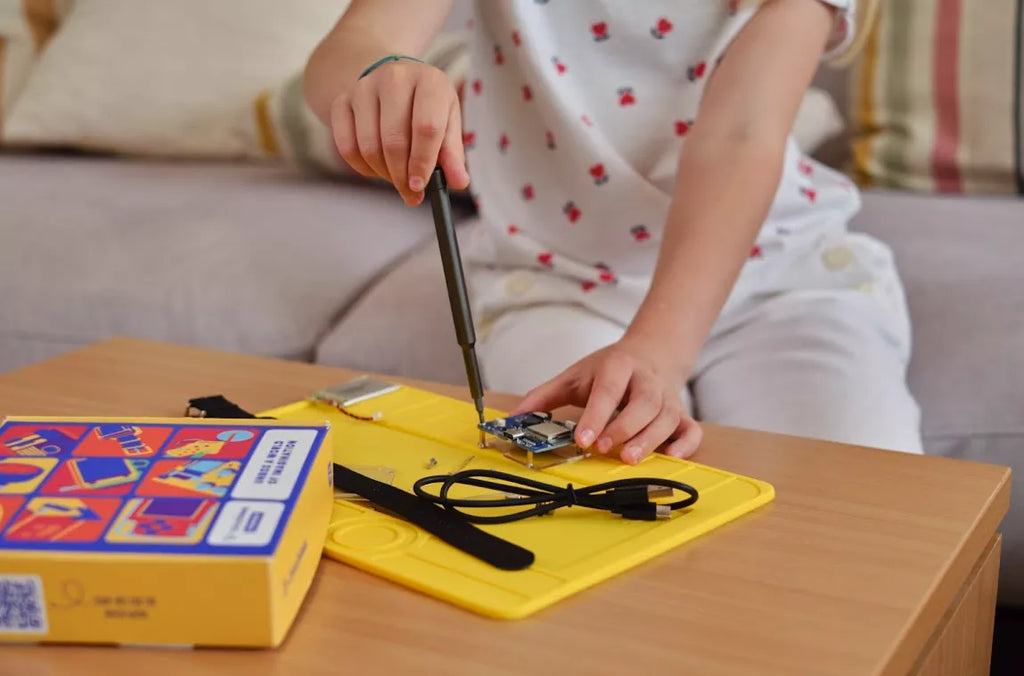
With the right projects, you can turn your homeschool curricula into an exciting journey of discovery and learning.
Create your STEM homeschool curriculum with CircuitMess
Let's get hands-on with CircuitMess’s coolest STEM kits. Each one is a mini-adventure, packed with fun and learning. And each one will teach your kids invaluable STEM skills simply through play.
Here’s the scoop on four awesome kits that’ll jazz up your homeschool STEM game.
Synthia — DIY Music Machine
Got a music lover at home? Synthia is their chance to dive hands-first into the world of electronic music.
They’ll build their own synth and discover the joy of creating tunes from scratch—no prior tech skills required, just a love for beats!

Cool factor: Synthia isn’t just a synth; it’s your ticket to becoming a sound wizard. It's perfect for the music-loving, curious kid who wants to mix beats and learn electronics.
What’s inside: Build your own synthesizer and dive into the world of electronic music. It’s all about crafting sounds, understanding waves, and maybe composing your next ringtone.
Who’s it for: Ideal for kids 11+ who dig music and are eager to uncover the tech behind the tunes. Great for blending creativity with STEM and coding skills.
Wheelson — AI robot car
Imagine turning your living room into a robotics lab with Wheelson. This nifty AI robot car makes coding a blast, allowing your kiddo to see their programming come to life.
It’s perfect for sparking a love for tech in a super fun, super accessible way.
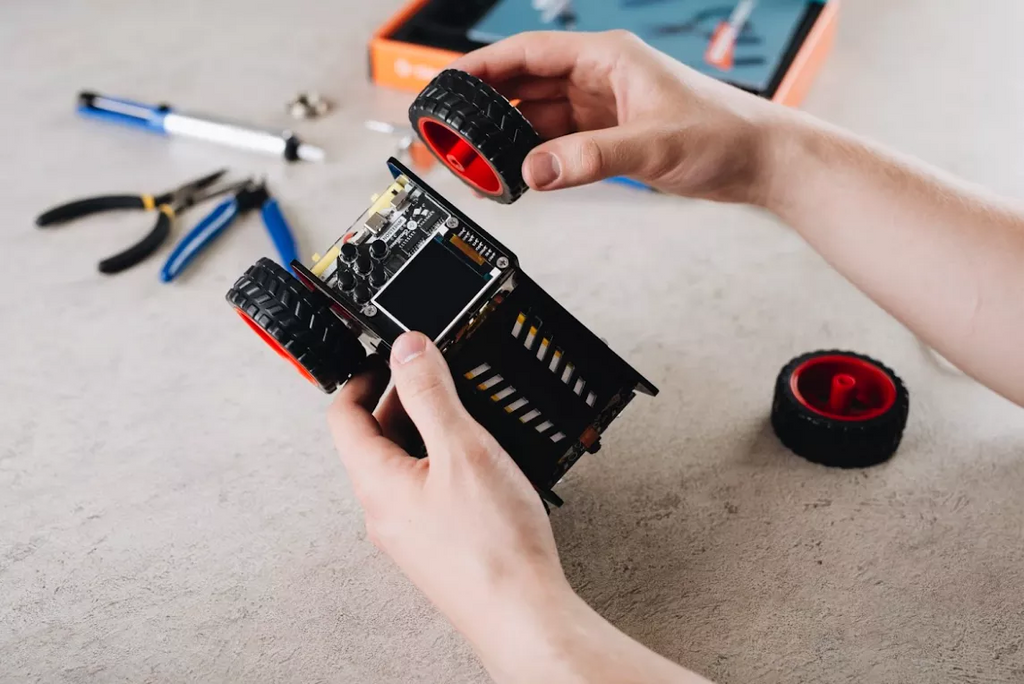
Cool factor: Meet Wheelson, your AI-powered buddy on wheels. It’s like bringing a sci-fi movie to life, teaching you to code while dodging obstacles and following lines.
What’s inside: This kit turns coding into a game, letting you teach Wheelson to navigate mazes and understand signals. It’s robotics in action, showing how machines learn and move.
Who’s it for: Tech enthusiasts and robot fans will love getting their hands on Wheelson. It’s a blast for anyone into gadgets and gizmos, ready to tackle a coding challenge.
ByteBoi — DIY gaming console
ByteBoi is where gaming meets making. Your child gets to build their own game console and then code their own adventures.
It’s the ultimate project for young game enthusiasts eager to learn how their favorite games are made—and then make their own.
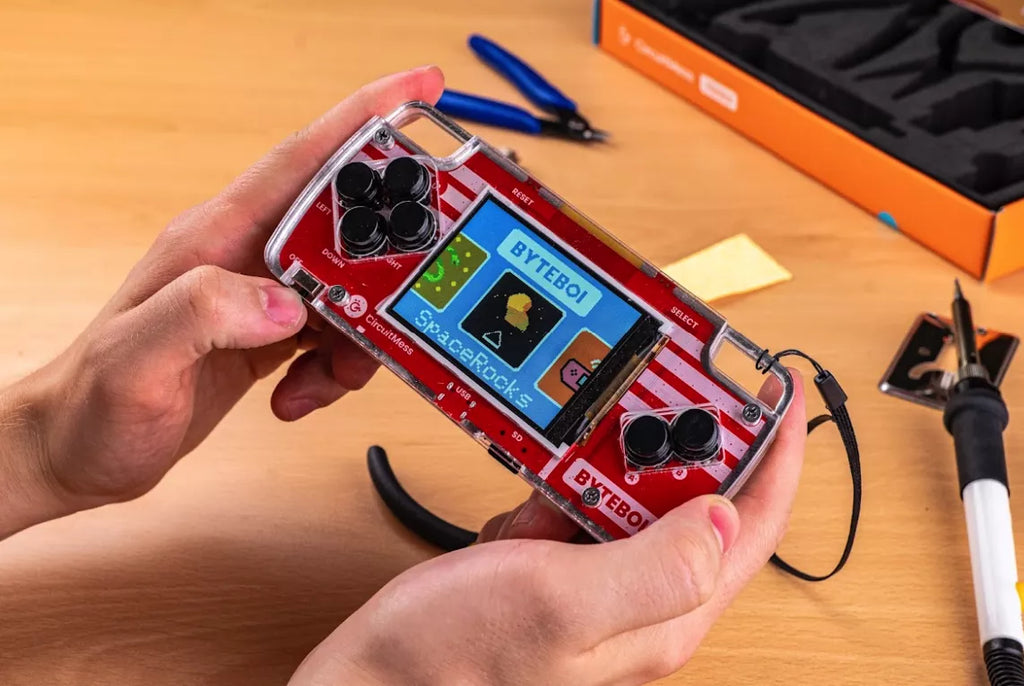
Cool factor: ByteBoi is more than a game console; it’s your DIY gateway into game creation. Build it, code it, and then play your own games. It’s learning, with a high score.
What’s inside: You get to build your handheld console and then jump into designing games. It’s coding meets creativity, where your imagination is the limit.
Who’s it for: Perfect for future game developers and creative coders. If you love playing and want to start creating or simply learn more about game consoles in general, ByteBoi’s your best pal.
Chatter — DIY walkie-textie
Chatter takes the mystery out of wireless communication, transforming it into an exciting, hands-on project.
Your child will send messages without a Wi-Fi signal in sight, exploring the fascinating world behind digital connectivity. Perfect for curious minds ready to connect in a whole new way.
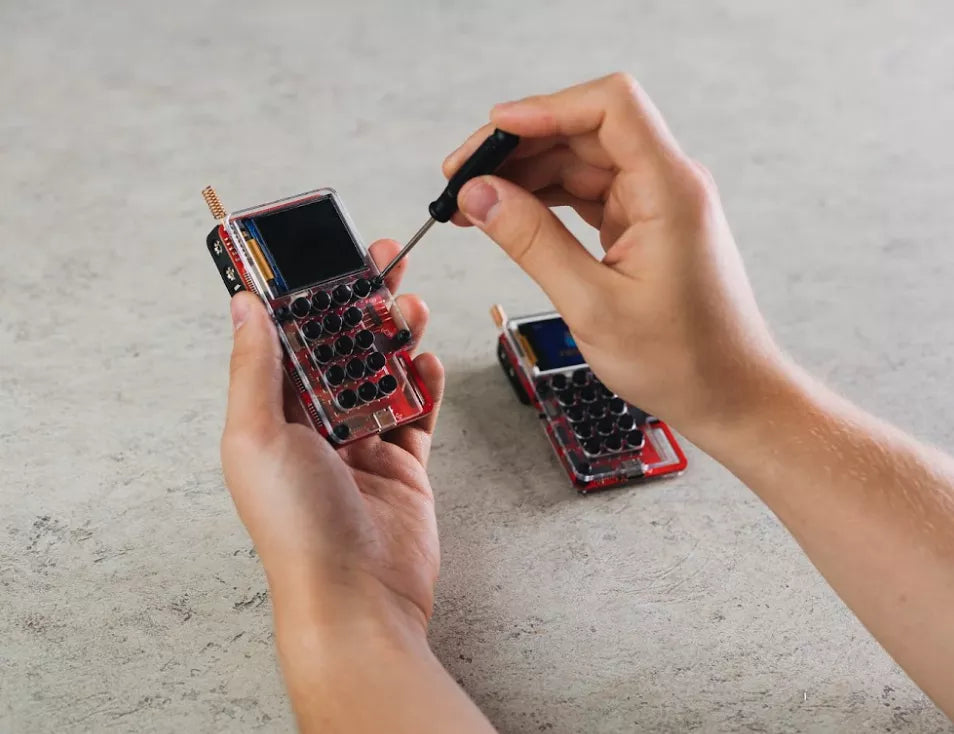
Cool factor: Chatter lets you send messages the high-tech way, without Wi-Fi or cellular. It’s all about secret messages and understanding the magic of wireless communication.
What’s inside: Dive into the world of radio frequencies and digital communication. Build a device that chats over long distances, exploring how modern tech keeps us connected.
Who’s it for: Young techies curious about how gadgets talk to each other. If you’re into exploring new tech frontiers, Chatter is your kind of challenge.
No matter if your kid wants to rock out with Synthia, code with Wheelson, create games on ByteBoi, or message through Chatter, CircuitMess has a STEM adventure tailored just for them. It’s all about fun, discovery, and tapping into that endless curiosity—perfect for any young explorer eager to learn and create.
Teach your kids STEM with CircuitMess STEM kits
In the quest to provide an engaging and effective STEM education at home, CircuitMess STEM kits emerge as a game-changer. These kits aren't just boxes of parts; they're gateways to understanding, creativity, and the joy of making something with your own two hands.
Here’s why CircuitMess STEM kits should be part of your homeschool science curriculum and how they can transform the way your kids learn about STEM.
Hands-on learning at its best
CircuitMess STEM kits take learning out of the textbooks and into the real world. Each kit is a hands-on project that guides your child through building and understanding their own electronic device.
Whether it's a robot, a gaming device, or a communication tool, kids get to see the principles of STEM come to life in their creations.
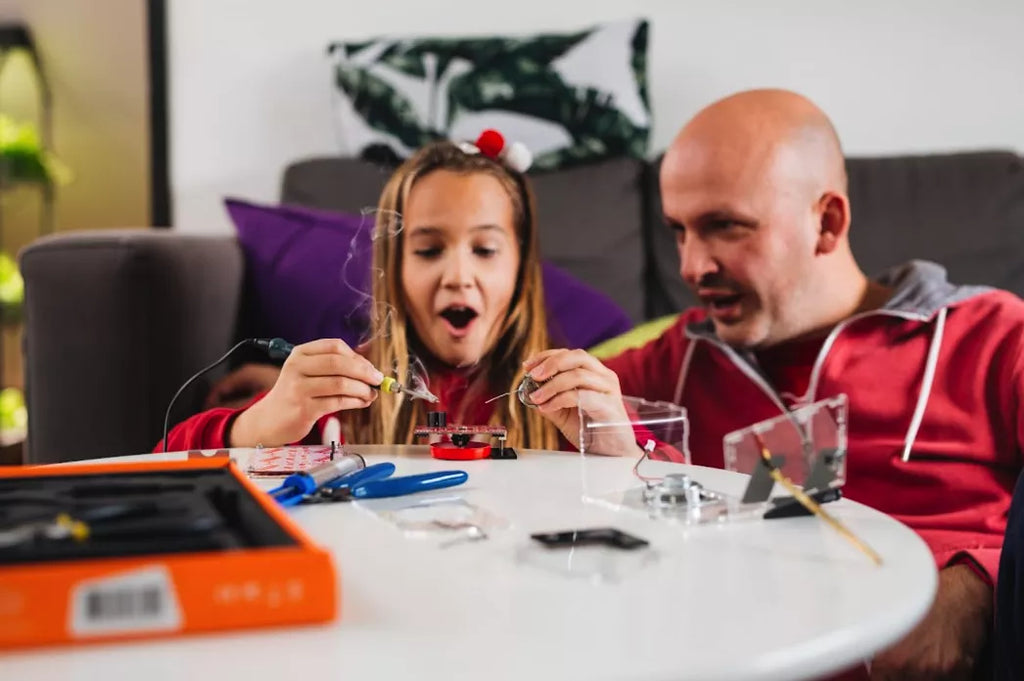
No experience? No problem!
One of the best things about CircuitMess kits is that they're designed for all skill levels. You don't need to be an engineer or a tech whiz to help your child build their project.
Each kit comes with detailed instructions and educational content that explains the science and technology behind the project, making learning accessible and fun for everyone.
A curriculum that grows with your child
CircuitMess offers a range of kits that cater to different ages and interests, making it easy to find something that fits your child's current skill level and curiosity. As your kid grows and their understanding deepens, you can move on to more complex kits.
This means that your homeschool STEM curriculum can evolve over time, keeping pace with your child’s development and interests.
Encouraging creativity and problem-solving
What sets our STEM kits apart is our emphasis on critical thinking, creativity, and problem-solving.
Each project challenges kids to think critically, troubleshoot issues, and apply their knowledge in practical ways. These skills are invaluable, not just in STEM fields but in any area of life.
Sparking a passion for STEM
Perhaps the most important benefit of incorporating CircuitMess STEM kits into your homeschooling is the passion for STEM they can ignite in your children.
By completing a tangible project that they can play with, show off, and even customize, young minds develop a deep sense of accomplishment and an eagerness to learn more.
It’s this excitement for discovery and creation that lies at the heart of STEM education.
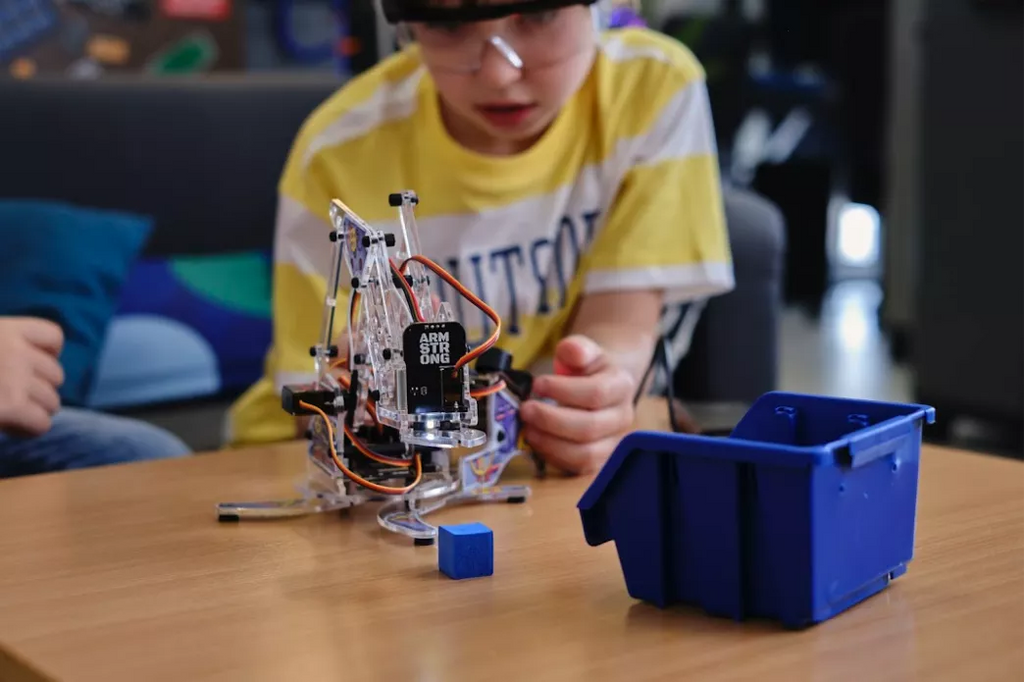
How to integrate CircuitMess projects into your lessons
Integrating CircuitMess projects into your STEM curriculum for homeschool students can transform learning into an interactive, self-paced experience. Follow these steps to seamlessly blend these projects into your lessons:
-
Start with the basics: Choose a kit that matches your child's age and skill level to ensure a positive and encouraging start.
-
Build together: Make it a family activity, where everyone can contribute, learn, and have fun.
-
Incorporate theory: Use the educational material provided with each kit to discuss the underlying principles and theories of the project.
-
Encourage exploration: After completing a kit, encourage your child to experiment with it, ask questions, and explore further applications of what they've learned.
-
Celebrate success: Celebrate the completion of each project to reinforce the joy of learning and achievement.
Teaching your kids STEM with CircuitMess STEM kits transforms your homeschooling experience.
It's not just about equipping them with STEM skills — it’s about opening their minds to the wonders of science, technology, engineering, and math in a way that's engaging, hands-on, and downright fun.
It's about building not just circuits, but curiosity, confidence, and a lifelong love of learning.
Raise little STEM superheroes with CircuitMess
Turning your home into a STEM superhero training ground is an adventure with CircuitMess STEM kits. These kits aren't just about learning; they're about empowering your kids to invent, explore, and solve problems, transforming them into the innovators of tomorrow.
By integrating these practical projects into your homeschool curriculum, you're giving your children the tools to unlock their potential and the confidence to tackle the challenges of the future. With every new project they build and code, they'll feel proud, knowing that they tackled their challenges head-on — and won!
Excited about the future of learning? We are too! And we're making sure it looks awesome. Join our community and makers and innovators and dip your toes into STEM with our specialized DIY STEM kits.
Whether you're looking for STEM kits for your middle- and high schoolers — or looking for a STEM toy for your younger kids — we've got you!
Sign up for a 10% off your first purchase
Read stories how our founder Albert turned his childhood passion into CircuitMess, and get exciting DIY project ideas you can do with your kids at home for free.
Read more

Is Your Child Ready to Become a Space Explorer? (Here's How)
Ever gazed up at the night sky and felt a sense of wonder, a burning curiosity about those twinkling stars and distant g...

DIY Delights: 5 Easy Electronics Projects for Kids
Ever wanted to build your own glowing robot or a musical instrument with lights? Your very own Ron's Gone Wrong or Wall-...

How to Teach Your Kid to Think Like a Coder (And Get Ahead!)
Teaching your kids to code can be one of the most productive and rewarding ways to spend their time. Think about it - th...